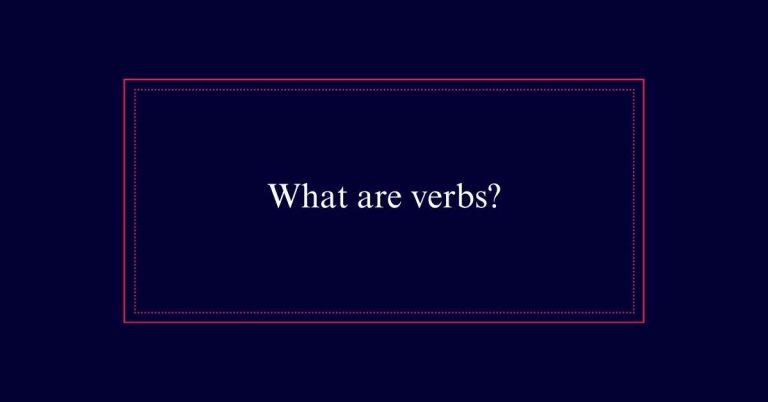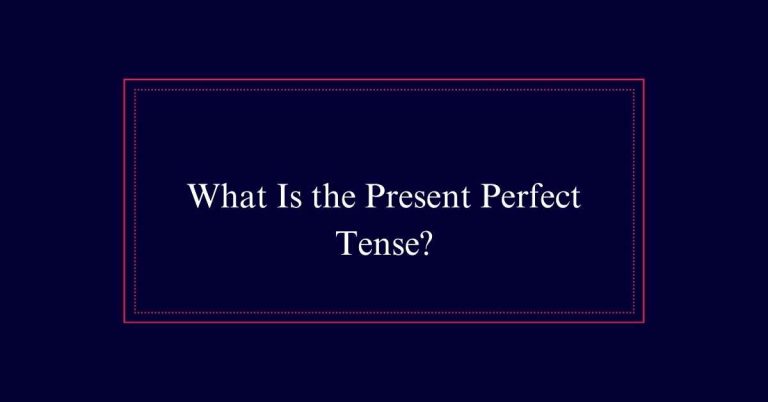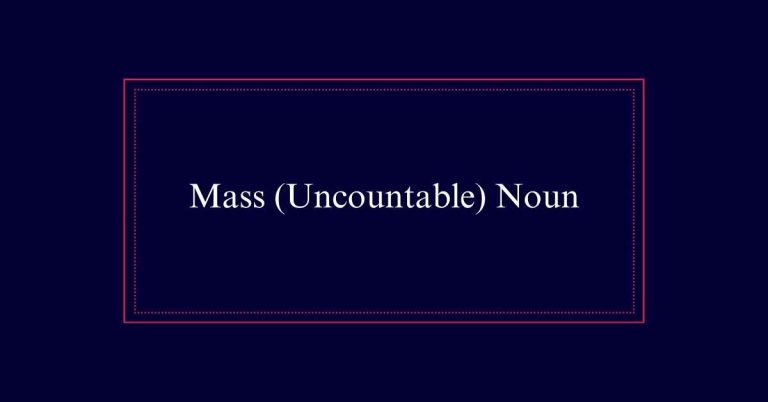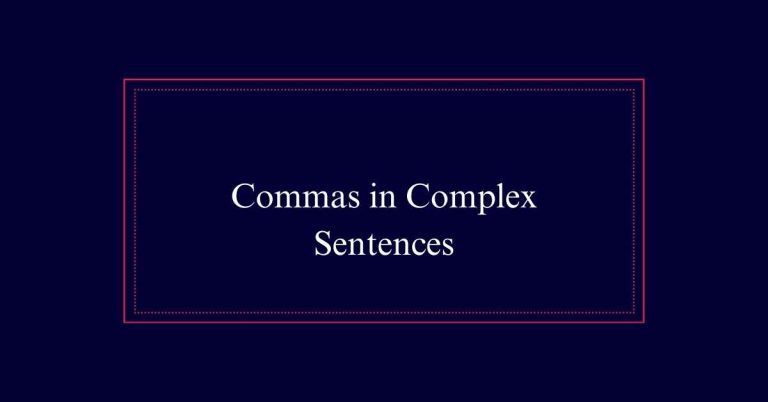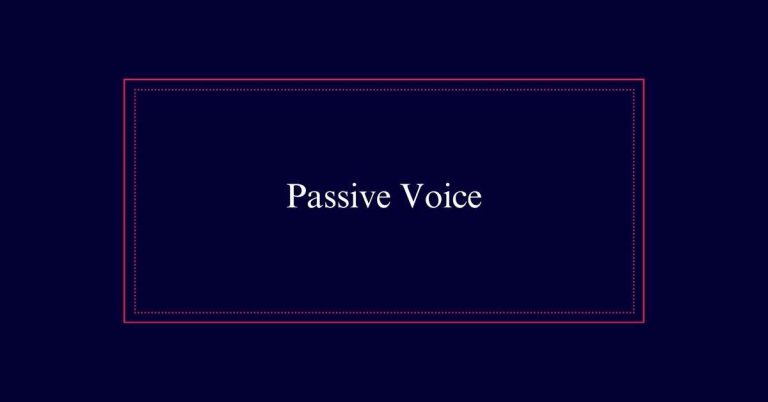What Is a Gerund?
A gerund is a verb form that acts as a noun, created by adding ‘ing’ to the root verb. For example, in “Swimming is fun,” the word “swimming” functions as a noun. Gerunds can serve as subjects, direct objects, and objects of prepositions. They can also form gerund phrases, such as “swimming in the lake,” that function as a noun unit.
Gerund Definition
A gerund is a verb form that functions as a noun in a sentence. It is created by adding ‘ing’ to the root verb, transforming the verb into its present participle form. This form allows the verb to act as the subject, object, or complement within a sentence.
For example, in the sentence ‘Running is fun,’ the word ‘running’ is a gerund acting as the subject. Unlike regular verbs, gerunds do not describe actions but rather serve as focal points in a sentence. They can also form gerund phrases when combined with modifiers or objects, further expanding their utility in language.
Functions of Gerunds
Gerunds serve various functions in a sentence, acting as subjects, objects, and complements.
As subjects, gerunds start a sentence, such as ‘Running is fun.’
When functioning as direct objects, they follow action verbs, like ‘I enjoy reading.’
Gerunds can also be indirect objects, as in ‘She gave painting a try.’
Additionally, they serve as objects of prepositions, for example, ‘They talked about swimming.’
Finally, gerunds can act as subject complements, following linking verbs to rename or describe the subject, like ‘Her passion is dancing.’
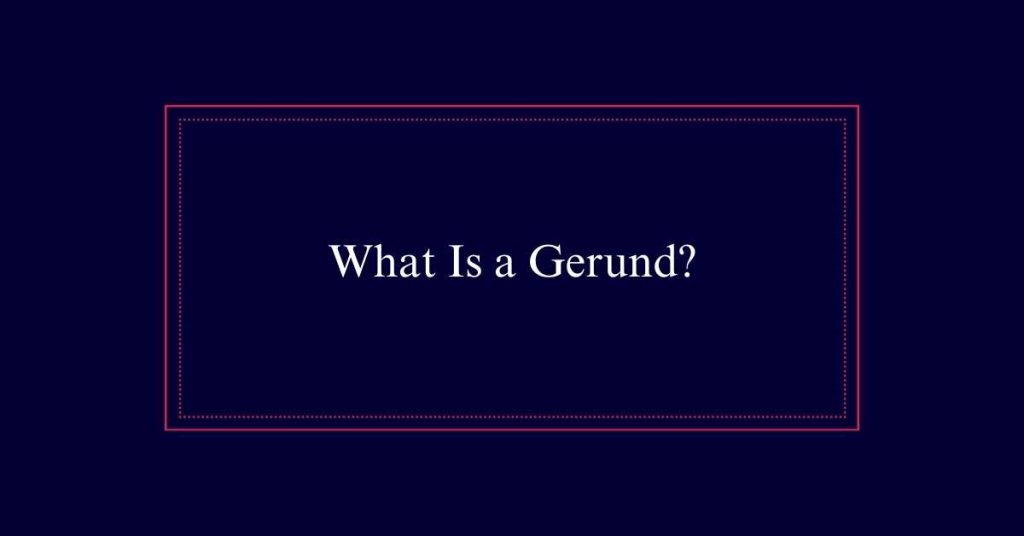
Forming Gerunds
To form a gerund, add ‘ing’ to the end of a root verb. This transforms the verb into its present participle form, allowing it to function as a noun in a sentence.
For example, the verb ‘run’ becomes ‘running.’ This newly formed gerund can now be used as the subject, direct object, or object of a preposition.
It is important to note that not all verbs ending in ‘ing’ are gerunds. The context in which the word is used determines its role.
For instance, in ‘Running is fun,’ ‘running’ is a gerund acting as the subject. However, in ‘She is running,’ it remains a verb describing an action.
Gerund Phrases
Including a gerund along with its modifiers or objects forms what is known as a gerund phrase. Gerund phrases act as nouns within sentences, providing a more detailed sense of the action involved. For instance, in the phrase “Running with scissors,” “running” is the gerund, and “with scissors” serves to modify it, creating a complete thought.
Here are some examples of common gerund phrases:
| Gerund Phrase | Function in Sentence |
|---|---|
| Apologizing to them | Subject |
| Underground exploring | Direct Object |
| Running with scissors | Object of a Preposition |
| Painting the house quickly | Subject Complement |
Subject Gerunds
Biking can be an enjoyable and sustainable mode of transportation.
In sentences like ‘Biking is my newest hobby,’ the word ‘biking’ acts as a subject gerund. A subject gerund functions as the main topic of the sentence, taking on the role of a noun. This shifts the focus from the action itself to the concept or activity.
Subject gerunds are formed by adding ‘ing’ to the root verb, converting it into a noun form. For example, in ‘Running is good for health,’ ‘running’ serves as the subject.
Subject Complement Gerunds
A subject complement gerund completes the subject of a sentence by renaming or describing it. This type of gerund follows a linking verb and provides more information about the subject. It can help clarify or redefine the subject in a succinct manner. For example, in the sentence “My favorite pastime is reading,” the gerund “reading” serves as the subject complement, explaining what the favorite pastime is.
Here is a table to illustrate subject complement gerunds:
| Sentence | Subject Complement Gerund |
|---|---|
| Her dream is traveling the world. | traveling the world |
| His hobby is painting landscapes. | painting landscapes |
| The biggest challenge is learning. | learning |
| My goal is improving my skills. | improving my skills |
Object Gerunds
After understanding how gerunds function as subject complements, we can now explore how they serve as objects in sentences.
Gerunds can act as direct objects, indirect objects, and objects of prepositions. For example, in the sentence ‘I enjoy swimming,’ the gerund ‘swimming’ is the direct object of the verb ‘enjoy.’
In ‘She considers singing a joy,’ the gerund ‘singing’ functions as an indirect object. Gerunds can also follow prepositions, as in ‘They are excited about traveling.’ Here, ‘traveling’ is the object of the preposition ‘about.’
Gerunds and Infinitives
Understanding the relationship between gerunds and infinitives is key to mastering their use in sentences. Gerunds end in -ing and function as nouns, while infinitives use “to” plus the base form of the verb. Both can act as subjects, objects, or complements, but their usage often depends on context and meaning.
Here’s a comparison:
| Function | Gerund Example | Infinitive Example |
|---|---|---|
| Subject | Swimming is fun. | To swim is fun. |
| Direct Object | I enjoy swimming. | I want to swim. |
| Subject Complement | His hobby is swimming. | His goal is to swim. |
Gerunds in Sentences
Gerunds play a versatile role in sentences, serving as subjects, objects, and complements to convey specific actions or states. As subjects, they can introduce the main idea, such as in ‘Swimming is fun.’
When functioning as direct objects, gerunds receive the action of the verb, as seen in ‘I enjoy reading.’
Gerunds can also act as subject complements, providing more information about the subject, like in ‘Her favorite activity is hiking.’
Additionally, they serve as objects of prepositions, adding clarity to expressions, such as ‘She is excited about traveling.’
Examples of Gerunds
Many sentences illustrate the diverse ways gerunds enhance communication. For example, ‘Swimming is my favorite hobby’ uses ‘swimming’ as the subject.
In ‘She enjoys reading,’ ‘reading’ functions as the direct object. Gerunds can also act as indirect objects, as in ‘He gave jogging a chance.’
When used as the object of a preposition, gerunds provide clarity, such as in ‘They talked about traveling.’ Gerund phrases add further depth.
In ‘Apologizing to them was difficult,’ the phrase ‘apologizing to them’ is the subject. These examples show the versatility of gerunds in making sentences more dynamic.

